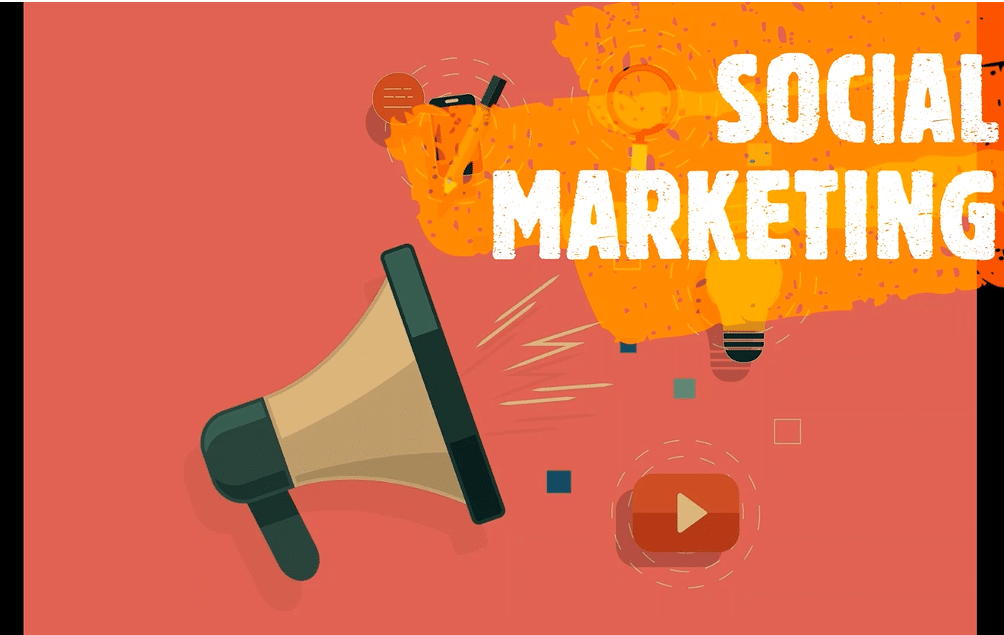Running an online business necessitates a decision between two fundamental principles that will guide your marketing strategy. It is common (and critical) to balance your budget, time, and efforts on growing your business across organic and paid strategies that produce the best results. Selecting between push and pull.
But what exactly is the distinction between push and pull marketing strategy? And which is the best fit for you?
Let’s go over the advantages and disadvantages of the push strategy. Understanding the difference between push and pull strategies will assist you in determining the best course of action.
What is a Push Marketing Strategy?
A push marketing strategy, also known as a push promotional strategy, is one in which a strategy attempts to take its products to consumers – to “push” them onto them. The goal of a push marketing strategy is to use various active marketing techniques to push their products to be seen by consumers, sometimes right at the point of purchase. One of the primary goals of push marketing is to reduce the amount of time that elapses between a customer seeing a product and making a purchase decision to buy the product to as little as possible.
To gain and increase product exposure, push marketing strategies are commonly used. Push marketing is primarily based on traditional advertising/marketing channels, such as a series of television commercials or a series of direct mail pieces. Again, a primary goal is to make as many consumers aware of the product and its benefits as possible. The term “push” refers to the fact that the company selling the product is constantly pushing it into the purview, or field of vision, of the potential customer.
Although almost every company strives to establish and nurture relationships with its customers or clients, push marketing is more concerned with making a quick sale than with cultivating relationships that foster brand loyalty. Creating a brand identity and a loyal customer base falls more under the category of “pull marketing.” As a result, it is quite common to see a company utilizing both push marketing and pull marketing to create a more comprehensive, overarching marketing strategy with maximum effectiveness in terms of increasing revenue and profitability and expanding the company’s market share.
Tools for Push Marketing Strategy
There are numerous tools available to aid in the development of an organization’s push strategies. These tools, for example, are
- Sales – The most visible tool
- Promotional sales
- Price discounts
- Coupons and so on
The tools listed above are the most important ones that one can use in push strategies to achieve the result he/she desires. The typical goal of a push strategy is to increase market share and reach more potential leads, to convert them to customers.
Examples of the Use of a Push Marketing Strategy
The company uses a push marketing strategy to bring the product to the consumers. Consumers are introduced to or reminded of the product using any of the following push marketing methods:
- Direct customer selling – for example, a car salesman who meets customers in the company’s auto showrooms.
- Displays at Points of Sale (POS)
- Promotion of trade shows
- Packaging designs to entice customers to buy
Example of a Push Marketing Strategy
- A production company may try to persuade a retailer to stock its product. Once the retailer has the product in stock, the manufacturer or wholesaler may “push” it to customers with an eye-catching and informative point-of-sale display.
2. Roy has recently introduced a new product, the Fanner 3000. He developed an innovative fan product that emits no sound, has competitive pricing, is energy efficient, and can cool the room to the desired temperature after spending months in the hot weather of Hong Kong.
Roy is preparing to present and sell his product at an upcoming trade show to market it. Roy’s top priority is to increase visibility, so he plans to persuade major retailers to place the Fanner 3000 near check-out counters. Furthermore, he ensures that his product is well-stocked and plentiful as customer demand increases.
Advantages
- Push marketing strategy is beneficial for manufacturers who are attempting to establish a sales channel and are looking for distributors to assist with product promotion.
- It generates product exposure, demand, and consumer awareness for a product.
- Demand can be more forecastable and predictable because the producer can produce and push as much or as little product to consumers as they want.
- If a product can be produced at scale due to high demand, economies of scale can be realized.
Disadvantages
- It necessitates an active sales team that can collaborate and network with retailers and distributors.
- Poor bargaining power with retailers and distributors; the producers are the ones requesting that retailers stock their products. Also, the product may be new and thus not yet established as a profitable item for retailers to stock.
- Again, because the product is new, it may be difficult to forecast demand accurately.
- Initial marketing efforts are likely to be costly, and the results may be short because their focus are more on securing a one-time purchase than on building customer relationships and loyalty.
Push Marketing
Pull marketing is ideal for attracting customers to your product. The goal is to develop loyal customers by providing marketing materials that highlight what they are looking for.
For example, if a person is looking for a new babysitter, they may go to Care.com. They can choose a babysitter based on a list of preferences tailored to their specific requirements.
So, pull marketing has become critical in markets with high saturation, such as new apps or clothing companies, in the age of consumers educating themselves on products and services. Pull marketing demonstrates how your brand is distinct.
Pull Marketing Strategy
Let’s consider this example:
Rex wants his POS to be the one that businesses choose when looking for a point-of-sale (POS) system.
Pull marketing channels are precisely what Rex requires to accomplish this. Rex begins a blog on his website, runs specialized and high-traffic social media campaigns, and focuses on differentiating his brand from his competitors to pull his target market.
Rex focuses on SEO for his online marketing to make his system discoverable to his target market to boost his pull marketing strategy. Throughout his campaign, Google reviews and word-of-mouth reviews on sites like Yelp have been his best friends.
Rex can focus on credibility and reliability rather than marketing to make the next sale because he has already built a following since the launch of his app. This will eventually pull customers to his business. Pull marketing strategies typically take longer to produce results than push marketing strategies. However, this strategy ensures long-term customers and growth.
Now you may be wondering how to ensure you’re choosing the right type of marketing for your company; to assist you, let’s compare the two strategies more thoroughly.
What Is the Difference Between Push and Pull Marketing Strategy?
The main distinction between push and pull marketing strategy is how consumers are approached. The goal of push marketing is to promote products by pushing them onto people. Consider a sales display at your grocery store or a shelf of discounted products for push marketing. Pull marketing, on the other hand, aims to build a loyal following and attract customers to the products.
Pull marketing brings the consumer to the product, whereas push marketing brings the product to the consumer.
Is push or pull marketing more effective?
Consider how you want to approach customers when deciding which method is best for your company.
If you want to spread the word about your company, the push is most likely the way to go. If you’re a marketer looking to create brand awareness in your industry, perhaps for a specific product or service, pull is probably the best option.
Push marketing has a few drawbacks, most notably splitting costs and retaining long-term customers. If your company collaborates with a supplier to implement a push marketing strategy, you will have to split profits with the supplier, which means less revenue for you. Building brand loyalty is difficult with an outbound strategy because push marketing focuses on short-term sales.
Meanwhile, one disadvantage of pull marketing is that you may not be catering to the right target audience. To connect with your customers, you must first understand who they are and what they are looking for. For example, an athlete looking for running shoes may be uninterested in advertisements for heels.
Implementing a push and pull marketing strategy is an effective way to ensure you’re covering all bases with your marketing strategy — you can marry the best parts of both strategies in a way that’s complementary to your business, audience, and goals.
Push Strategy FAQ’s
Does Amazon use a push or pull strategy?
Amazon employs a push-pull strategy in which inventory is held in a push strategy and orders are shipped in a pull strategy.
What is push strategy in supply chain?
The push supply chain strategy dictates when products are made and supplied based on anticipated customer demand. Seasonal commodities are the most obvious illustration of a basic push supply chain strategy.
What is the primary emphasis of a push strategy?
Push marketing is concerned with bringing the product to the customer and placing it in front of the customer at the moment of purchase. This marketing technique aims to shorten the time between a customer discovering a product and purchasing it.






